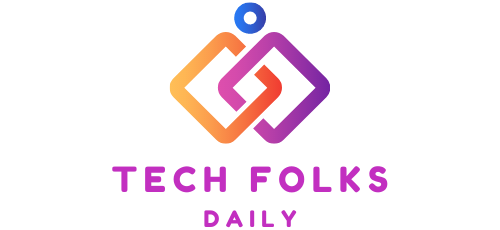Fintech, It’s incredible how lavish the market is on repackaging, especially in the business environment. To innovate is also to recombine existing elements differently, in a new context. Participating in the Starts FintechClass with my friends Marcelo, Pedro, and Felipe, I remembered an incredible story that I experienced. I could be helpful to those in this current wave of Fintechs. I want to share my experience setting up a Fintech in the 1990s in the internet’s nursery.
Yes, long before GuiaBolso, Quero Guitar, Easy Credito, and others, Patagon, Investshop, and Creditoimobiliário.com existed.
I imagine that some current internet entrepreneurs, aged between 25 and 30, do not know, but the world and Brazil experienced a digital boom from 97 to 2000. It was there that players like Nutec were born (which became Zaz and ended up Terra), ZipNet, Booklet, Bol, and IG, to name a few.
Together with the company’s chief executive and a super technology partner, we decided to make the spinoff — what a beautiful name, right? — from the digital operation, forming the startup Créditoimobiliário.com. This current trend of separating digital from traditional banking is nothing new.
O insight
We understood that there was an opportunity to set up a marketplace — ok, we didn’t know it was a marketplace — but we wanted to connect mortgage borrowers (you and me) with funding providers, in this case, the big banks. This was when real estate credit had a shallow penetration in real distinction, and the internet was still dial-up.
Our objective was to facilitate the tortuous process that someone who wants to buy their own home has to go through and to consolidate ourselves as an originator of real estate credit, which until then was distributed as a product without appeal through the branches of the big banks.
Banks hid the product, given the better profitability of other credit operations. To know what this might have insight for your Fintech, let me tell you a little about what we did:
Do business plan ao MVP
The first step was to create a business plan. I remember that we posted credit opening fee income in the percentage of 3% of the financed amount. We also launched advertising revenue; after all, we were a portal. And finally, gain from the sale of information that would be generated on the platform. Sweet illusion.
The second step was to assemble a version of the Portal that was, in fact, an evolution of what we were doing within the company where we worked. We didn’t know anything about lean startups, but we practiced some of its principles. The third step was to sign up for a business plan competition, the old-fashioned version of startup acceleration.
Incredibly, MIT – yes, itself – selected us to do a one-to-one pitch for two venture capital funds that had established our idea.
We left for Boston, and, upon arriving at MIT, we discovered that one of the investors who selected our idea was former Central Bank president Gustavo Franco. He, at the time, had just founded Rio Bravo Investimentos. And he wasn’t our only potential investor. Puntocom Holdings and, later, Banco Opportunity, very active in the matter, were also interested. But, after a while, we saw that the Boston contacts did not evolve, and we returned to Brazil. We could carry out the first credit operation via the platform without even knowing the borrower.
It wasn’t a property purchase transaction we envisioned but a loan with a real estate guarantee. At this point, the old validation of the target customer showed us that we could be focusing on something wrong. In any case, we were able to install real estate credit simulators on the leading property sales portals at the time, PlanetaImóvel and Imovelweb, to capture leads, even if we had never heard of tips.
After the first sale, it was time to grow, but we needed funding since the first operation had been made possible with our resources, which was not our business model.
The business model challenge
The attempt to connect with banks when they believed that the number of branches was a sign of greatness and that API was not part of the day-to-day of corporations was not easy. It soon became evident that banks were not predisposed to be the other part of the marketplace. We made contacts that did not evolve. The idea of them being the source of monetization was overturned, paying a fee on the financed amount that would be, in practice, their CAC (customer acquisition cost) and our revenue model.
We pivoted the revenue model and started charging a percentage of 3% of the final customer’s financed amount. Unfortunately, this made the operation very expensive for those with good credit and threw the riskiest customers in our laps without having a consolidated format for securitization (sale) of this credit profile.
The beginning of the end
We had several discussions with investment funds to provide funding for our expansion. In the US, the Mortgage.com operation was growing rapidly, but then came the burst of the digital bubble and the crash of Nasdaq. Our dream turned into a nightmare. The business began to lose traction, and the big banks started to see mortgages as an opportunity for them to explore directly. Potential investors disappeared, scared by the turnaround in the market.
To this day, I reflect on whether we adopted the most appropriate hypothesis validation strategy. There was a relevant problem to be solved, but there was no product-market fit due to the limitations of our business model.
The end of the story was that banks started to operate their websites and simulators. Real estate portals started charging more and more to put our lead capture simulators on their platforms. We didn’t get the necessary funding to run the business with volume. The solution was to internalize the operation in the parent company and try new alternatives that did not happen.
This challenge opened my eyes to the need for innovation. It was, as they say at Endeavor, my Day1. More than that, it became clear to me how important it is to have a value capture model and imitation barrier over our ideas. And that timing is everything, but the damage was already done. The innovation fly had bitten me.
Who knows, if the idea had been presented in the current situation, we would have had better results. But there is no better timing than the absence of a non-existent business model. On your next groundbreaking project, be sure to re-examine old opportunities, and you never know when they will come back in full force.
Also Read : Service Design: In The World Of Work, Attention To Detail Makes All The Difference



